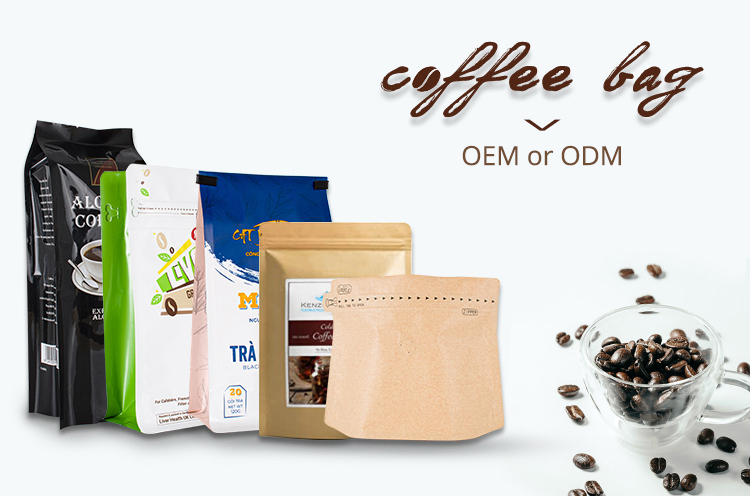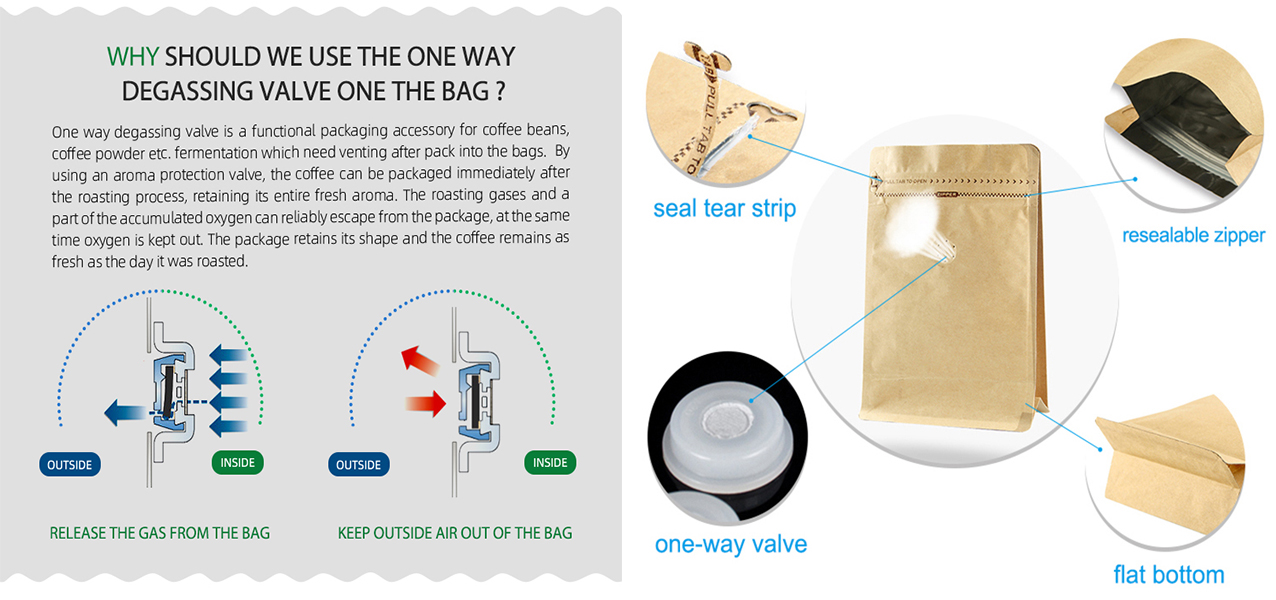Coffee Bag Production Process Coffee Packaging Supplies-KANZO PACK
There are many kinds of coffee bags. The shape can be classified into eight side sealing bags, stand up bag, diamond bag, tin-tie gusset bag. There is also with valve or not, or with a front zipper or side zipper. According to your needs, we can give you advice.
 Audited supplier
Audited supplierChoosing a suitable coffee bag to store the coffee beans correctly is a very important topic for those who pursue a high-quality coffee aroma.

Most of the aroma of coffee beans is produced after roasting, and the aroma and carbon dioxide will evaporate over time. Basically, it will be the most fragrant within a few days after roasting, and then slowly fade with time.
Roasted coffee beans are most afraid of the following elements: oxygen (air), moisture, light, heat, and odor. Oxygen causes the coffee beans to rot and deteriorate. The moisture will wash away the aromatic oil on the surface of the coffee. Other elements will interfere with the internal reaction of the coffee beans and finally affect the coffee flavor.
From this, you should be able to infer that the best environment for storing coffee beans is to cut off oxygen (air), dry and dark and tasteless. Among them, it is the most difficult to isolate oxygen.
You may think: "What's the difficulty of isolating the air? Vacuum packaging is fine. Otherwise, put it in a sealed coffee can, and oxygen can't get in." Vacuum packaging or hermetic packaging may be very difficult for other ingredients Good, but what we have to tell you is that neither package is suitable for fresh coffee beans.
As we said earlier, coffee beans will continue to release a lot of carbon dioxide after roasting. If the coffee beans in the vacuum package are fresh, the bag should burst. It is possible for coffee powder to be vacuum packed, but we all know that ground coffee itself is not the freshest state of coffee.
So, what is the best storage method?
The solution is here. The device on the market that can achieve the best effect of preserving the freshness of coffee beans is a coffee bag with a one-way vent valve.

Why is that? Here is a review of simple high school physics. Light gases move faster, so in a space with only one outlet and no gas, light gases tend to escape and heavy gases tend to stay. That's what Graham's Law tells us.
Imagine a bag with fresh coffee beans in it and some of the remaining space is filled with air that is 21% oxygen and 78% nitrogen. Carbon dioxide is heavier than either of these gases and when it is produced from coffee beans, it squeezes out oxygen and nitrogen. If you have a one-way valve, the gas goes out, not in, and you have less and less oxygen in the bag over time, which is what you want. Packages with one-way vents must be sealed to be effective, otherwise, oxygen can still enter the bag.
The enemies of the coffee bean are oxygen, moisture, heat, and light.So, what kind of bag would fit into roasted coffee beans?
The most coffee bag now uses one-way air valve bags lined with food-grade aluminum foil. Aluminum foil can block light and air. The function of the one-way air valve is to discharge excess carbon dioxide so that the bag will not burst without opening.
Another thing to remind is that coffee bags with one-way vent valves must be sealed to be effective, otherwise, oxygen can still enter the bag. Before sealing, you can gently squeeze out the air as much as possible to reduce the gas space in the bag, and the amount of oxygen that can contact the coffee beans will be less.
We have many stock collections for you to choose from. Customization is also available
 Audited supplier
Audited supplier
Customized breast milk storage bags manufacturers From China | Kanzo Pack

Quality spout pouch packaging for lotion Manufacturer | Kanzo Pack

High quality custom packaging bag wholesale with good price - Kanzo Pack

Customized Quality portable spout bag for lotion manufacturers From China | Kanzo Pack

Hanging ear drip coffee bag portable coffee packaging - Kanzo Pack

OEM/ODM factory custom packaging bags for Products | Kanzo Pack

Quality custom packaging bags Manufacturer | Kanzo Pack

Quality vacuum packaging bag for food | Kanzo Pack

Kenzo Packaging Factory View丨China Manufactory








